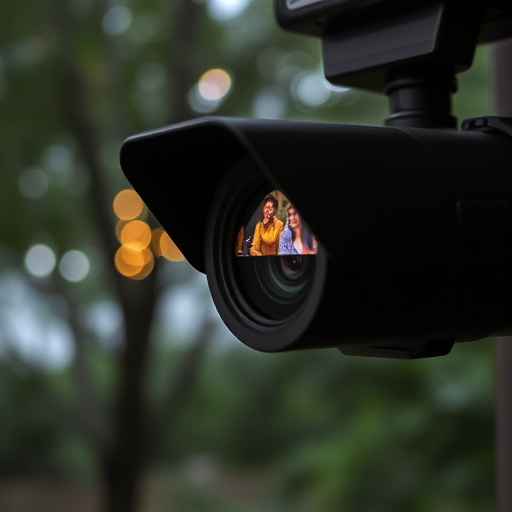Small hidden cameras in nurseries offer discreet monitoring for parents and caregivers, with wireless setup and remote access. Discretion is key during installation, placing cameras high, in corners, or integrated into décor. Radio Frequency (RF) signal tracking locates these devices, ensuring comprehensive coverage without compromising privacy. Detection range varies based on technology and environment, while meticulous visual inspections uncover hidden cameras in corners and crevices. Staying informed about detection techniques safeguards nursery privacy.
In today’s digital age, ensuring safety and privacy in nurseries is paramount. This article equips parents and caregivers with essential tips on wireless surveillance equipment location detection, focusing on the unique challenges of hidden cameras. We explore the basics of wireless surveillance, offering insights into choosing discreet yet effective camera locations. Learn about radio frequency (RF) signal tracking and understanding factors that impact hidden camera detection range. Discover best practices for uncovering small hidden cameras to foster a secure environment for your little ones.
- Understanding Wireless Surveillance Equipment Basics
- Choosing Discreet Camera Locations for Nurseries
- Utilizing Radio Frequency (RF) Signal Tracking
- Factors Affecting Hidden Camera Detection Range
- Best Practices for Uncovering Small Hidden Cameras
Understanding Wireless Surveillance Equipment Basics
Wireless surveillance equipment, often comprised of small hidden cameras, has become an essential tool for security and monitoring. When it comes to installing such devices, especially in sensitive areas like a nursery, understanding the basics is crucial. These compact cameras are designed to be discreet, making them ideal for places where you want unobtrusive observation without compromising privacy.
For instance, small hidden cameras for nurseries can be strategically placed to ensure round-the-clock monitoring of infants or young children. Their wireless nature allows for easy setup and remote access via a connected device, providing peace of mind for parents and caregivers. Knowing the capabilities and limitations of this technology is key to effective location detection and ensuring the safety of those in your care.
Choosing Discreet Camera Locations for Nurseries
When it comes to installing surveillance equipment in nurseries, discretion is key. Small hidden cameras for nursery environments should be strategically placed to ensure maximum coverage while remaining virtually invisible to children and staff. Consider mounting cameras high on walls or ceilings to avoid detection, utilizing corners to minimize their profile, and selecting models with sleek, non-intrusive designs that blend seamlessly into the décor.
Additionally, placing cameras in areas that are naturally out of sight—behind curtains, inside toys or furniture, or even integrated into light fixtures—can help maintain a safe environment without raising suspicion. Remember that the goal is to create a sense of security without compromising the natural atmosphere and comfort of the nursery setting.
Utilizing Radio Frequency (RF) Signal Tracking
One effective method to pinpoint wireless surveillance equipment, especially small hidden cameras like those designed for nurseries, is through Radio Frequency (RF) signal tracking. These devices operate on specific frequencies, and by using specialized RF detectors or analyzers, one can trace their location. This technique involves scanning for the unique signals emitted by the camera’s transmitter, allowing users to identify its exact position within a given area.
RF signal tracking is particularly useful in scenarios where visual confirmation is challenging, such as in hidden spaces or areas with obstructed views. It enables parents, caregivers, or security personnel to monitor nursery environments without disrupting the space or compromising privacy. By employing this technology, users can be assured of comprehensive coverage and accurate detection, ensuring the safety and well-being of infants and young children.
Factors Affecting Hidden Camera Detection Range
The detection range of wireless surveillance equipment, particularly small hidden cameras like those designed for nurseries, is influenced by several factors. One key factor is the type of technology used in the device—some advanced models employ sophisticated infrared or thermal imaging capabilities, enabling them to detect heat signatures and cover longer ranges.
The environment also plays a significant role. Obstructions like walls, furniture, or even human bodies can significantly reduce the detection range. In crowded spaces, the signal might get reflected or absorbed, hindering the device’s ability to accurately pinpoint hidden cameras. Moreover, interference from other wireless devices or signals in the area could impact performance, underscoring the importance of a clear line of sight for optimal detection results when using small hidden cameras for nursery monitoring.
Best Practices for Uncovering Small Hidden Cameras
When it comes to uncovering small hidden cameras, particularly in sensitive areas like a nursery, it’s crucial to adopt meticulous practices. Start by conducting a thorough visual inspection, paying close attention to corners and crevices where cameras might be concealed. Look for any unusual markings or protrusions that could suggest the presence of a device. Additionally, utilize specialized tools designed to detect hidden cameras, such as UV lights or camera locators, which can reveal invisible lenses or signals.
For nurseries, focus on common hiding spots like behind pictures, mirrors, or even in toys and furniture. Remember, small hidden cameras for nursery settings are designed to be discreet, so a keen eye is essential. Regularly updating your search methods and staying informed about the latest detection techniques will ensure you stay one step ahead of any malicious devices intended to invade privacy.
Wireless surveillance equipment, especially small hidden cameras, pose a unique challenge due to their discreet nature. By understanding the basics and employing strategies like RF signal tracking and considering environmental factors, you can enhance your detection capabilities. When it comes to nurseries, choosing strategic camera locations and using advanced techniques such as radio frequency tracking are essential to ensure safety without compromising privacy. Remember, staying informed about the latest best practices is key in uncovering even the most subtle of hidden devices.
